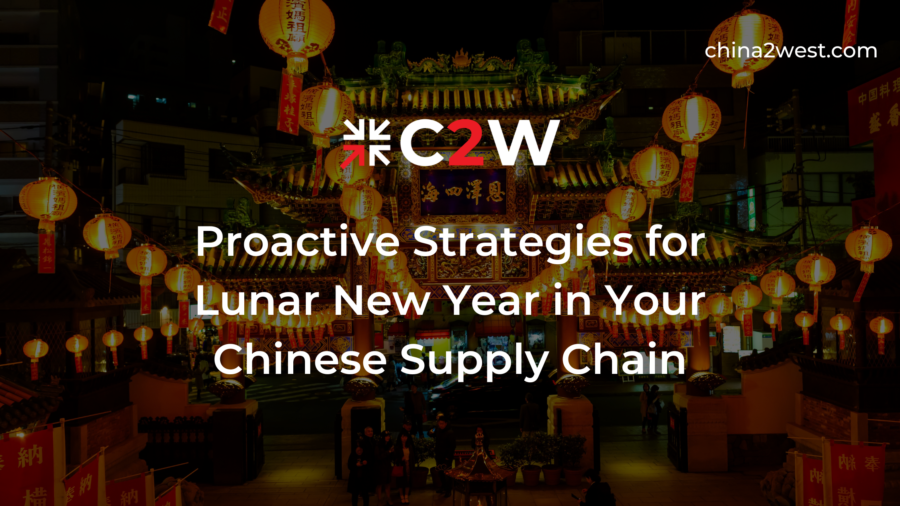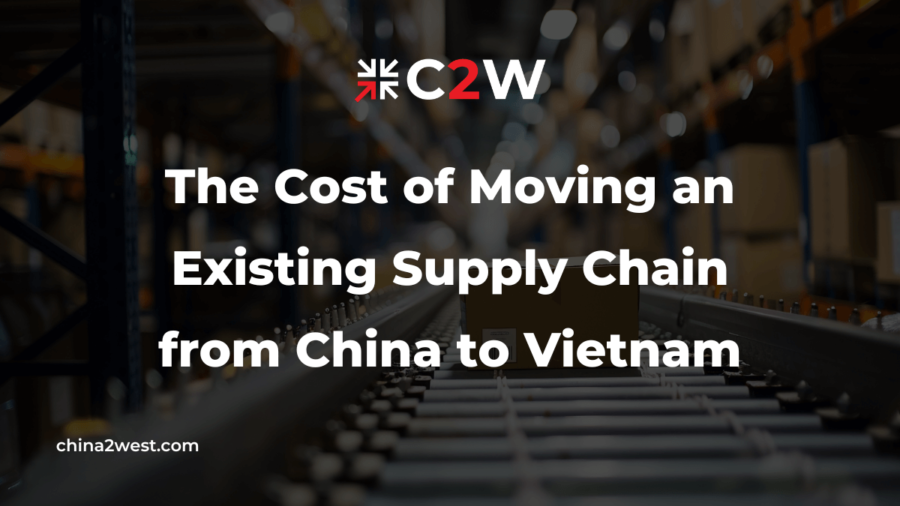As businesses gear up for the approaching holiday season in the West, the festive season of the Lunar New Year (LNY) is only two months away in the East, which will fall on February 10 in 2024. So strategic preparations are crucial, especially for those with production lines in China.
The LNY holiday, spanning up to two weeks, can pose significant challenges to supply chains due to factory closures, transportation disruptions, and changes in workforce availability. To ensure a seamless operation during this period, it is imperative to plan ahead and implement strategic measures.
In this comprehensive guide, we’ll explore key recommendations to navigate the complexities of the Lunar New Year and maintain a resilient supply chain.
1. Plan Ahead for Lunar New Year
Initiating preparations well in advance is paramount, considering that Chinese factories may begin winding down operations one to two weeks before the actual holiday.
Establishing open lines of communication with suppliers is crucial during this phase to gain insights into their schedules and potential disruptions.
Early planning sets the foundation for a proactive approach to managing the challenges associated with the Lunar New Year.
2. Communication with Suppliers for Lunar New Year Success
Effective communication with Chinese suppliers is the linchpin of a successful Lunar New Year strategy. Obtaining detailed information about their production schedules leading up to the holiday and inquiring about any potential delays provides a solid foundation for decision-making.
Transparent communication ensures that businesses can make informed choices regarding inventory and production plans, enhancing overall preparedness.
3. Stock Up on Inventory (With a Caution)
Increasing inventory levels in the weeks leading up to the holiday is a prudent step to account for potential production halts. However, exercising caution is crucial to avoid overstocking, especially in light of possible diminished consumer demand in the West for the following year.
This proactive approach helps prevent shortages and ensures businesses can meet customer demand during the holiday season without accumulating excess inventory.
4. Order Early
Placing orders well in advance is a key element in ensuring timely manufacturing and shipping before factory closures. Late orders may face delays as factories prioritize earlier orders.
Early ordering is critical to maintaining a consistent supply chain during the holiday season, reducing the risk of disruptions.
5. Flexible Production Schedules
Collaborating with Chinese partners to establish flexible production schedules that accommodate the holiday season is a strategic move.
Discussions regarding options such as increasing production output before the holiday or extending production after the holiday can help mitigate potential disruptions.
Flexibility in production schedules is a key aspect of maintaining operational resilience during the Lunar New Year.
6. Backup Suppliers
Identifying and establishing relationships with backup suppliers, both within and outside of China, is a proactive measure.
Having alternative sources can mitigate risks in case the primary supplier faces delays or closures. Exploring options in countries like India, Vietnam, Thailand, and other Southeast Asian nations provides businesses with contingency plans to navigate Lunar New Year challenges successfully.
7. Monitor Shipping and Transportation
Being aware of potential delays in shipping and transportation during the LNY period is crucial.
Planning shipments accordingly and considering expedited options if necessary ensures that products reach their destinations on time, minimizing the impact of disruptions associated with the holiday.
8. Financial Planning
Considering the financial implications of LNY disruptions is a strategic move. Planning for potential cash flow challenges during the holiday period and making arrangements with suppliers for any pre-holiday payments ensures financial stability.
This foresight enables businesses to navigate any financial hurdles that may arise during the festive season.
9. Employee Planning
For businesses with employees in China, anticipating potential workforce shortages is essential, as many workers travel to their hometowns for the holiday. Communicating with employees well in advance to understand their plans and making necessary adjustments to operations ensures a smooth transition during the Lunar New Year period.
10. Post-Holiday Production Ramp-Up
Anticipating that production may take some time to return to normal levels after the holiday is a critical aspect of post-Lunar New Year planning.
Factoring in the post-holiday ramp-up period when planning inventory levels and production schedules helps businesses avoid disruptions in the weeks following the LNY, contributing to sustained operational success.
By implementing these proactive steps, businesses can minimize the impact of the Lunar New Year holiday on their supply chain, ensuring a smoother operation during this period of disruption. Strategic planning, open communication with suppliers, and flexibility in operations are key to overcoming the challenges posed by the LNY festivities and maintaining a resilient supply chain. If you need professional advice for your supply chain during LNY, please feel free to contact us! C2W’s unique 18 years of China manufacturing experience will definitely come to your rescue.




